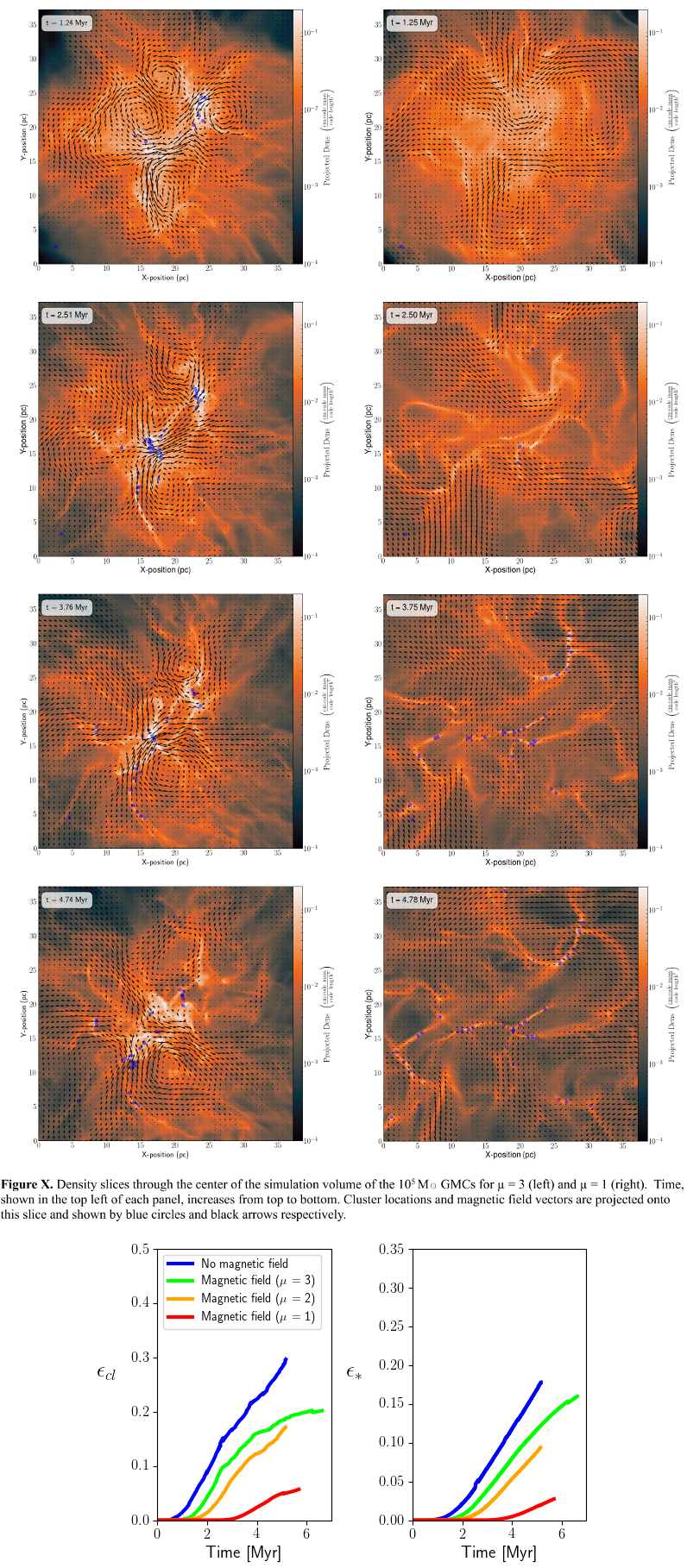| EPoS Contribution |
|
Simulating MHD and Radiative Feedback Effects in Massive Star Cluster Formation
Ralph Pudritz McMaster U, Hamilton, CA | |
| It is often assumed that radiative effect is the main player in reducing the efficiency of star formation in giant molecular clouds. Given the recent breakthroughs in magnetic studies of molecular clouds, it is important to investigate the dual role of radiation and magnetic fields in cluster formation. We show the results of our RMHD simulations of cluster formation (using the FLASH code) in giant magnetized molecular clouds, that greatly extends our work on purely radiative feedback effects in cluster formation. We simulate GMCa at various levels of initial magnetization (mass to flux ratios of 1-3). While our early work showed that radiation pressure alone cannot suppress star formation to low observed efficiencies, our new results show the addition of B fields significantly reduces these efficiencies closer to observed values. In Figure 1, we show a comparison of the structure of turbulent cluster forming clouds in two RMHD simulations at mass to flux of 3 and 1. Magnetic structure is similar to that observed by the Planck observatory. In Figure 2, we see that the efficiency of both cluster and star formation efficiencies are strongly affected as magnetization becomes important. We also present several other interesting and unexpected aspects of cluster formation arising in our RMHD simulations. | |
 | |
| Caption: Fig 1 (left) Panel showing slices through RMHD simulations of μ = 3 vs 1 simulation of magnetized, turbulent GMCs. These show highly filamentary structure, magnetic field directions, and the positions of the most massive clusters with time. In Fig 2, the cluster (left) and star (right) formation efficiencies for different initial cloud magnetizations are shown. | |
| Collaborators: B. D' Ortenzio, McMaster U, CA C. Howard, McMaster U, CA |
Suggested Session:
Molecular Clouds |

